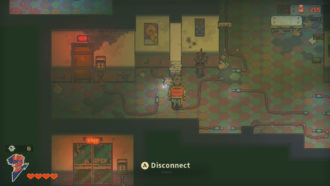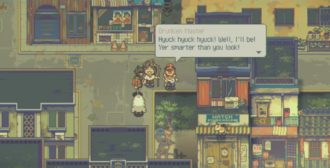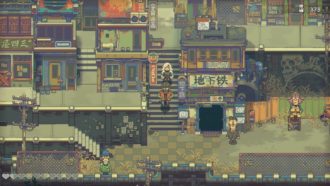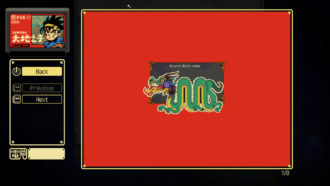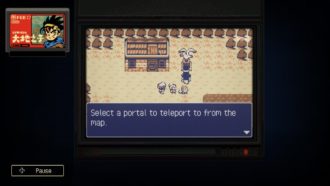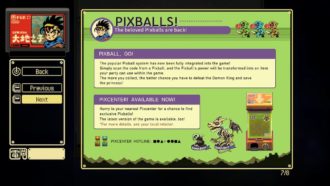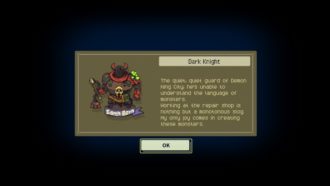Platforms:
PC, Nintendo Switch
Released:
September 16, 2021
Publisher:
Chucklefish Games
Developer:
Pixpil Studio
Eastward is a beautiful and spirited pixel adventure lovingly developed by indie studio Pixpil, set in a decaying post-apocalyptic world. Being also published by the pixel favourite Chucklefish, it’s a clear sign for you to strap in for a marvellous visual and musical ride. You will laugh, you may weep, and you will certainly find a lot of mysteries that need solving.
We’re introduced to our protagonists John and Sam who live in a deep-underground community called Potcrock Isle. A community of miners, merchants, teachers, and children living a simple life away from danger. The people of Potcrock Isle have no real knowledge of the world above, believing it to be an unlivable hell-scape where nothing but deathly miasma awaits.
The mysterious young Sam remembers the colour blue. She just knows there’s life on the surface, but how could that be? Sam has only ever known John since he found her in a tank deep underground. She is itching with curiosity for the outside world. This starts a story-driven journey into the unknown where the mix of sci-fi and 90’s anime-style locations leave you breathless and hungry to find the truth hidden in the ruins above, and below.

John is a scruffy hard-working digger who works in the mine shafts to make a living. Sam on the other hand is a brave and cheeky white haired young girl being looked after by John. She follows him almost everywhere with a burning curiosity for the world around them.
Their meeting is never fully explored in-game, but you can see plain as day that regardless of their origins, they have a wholesome and loving attachment to each other. John is the always silent, barely emotive type whereas Sam is a bubbly ball of talkative energy. Although John is Sam’s adoptive father figure, Sam is the communicator and narrative leader. This allows Eastward to let us view this post-apocalyptic setting through the excitable wonder of a child’s perspective.
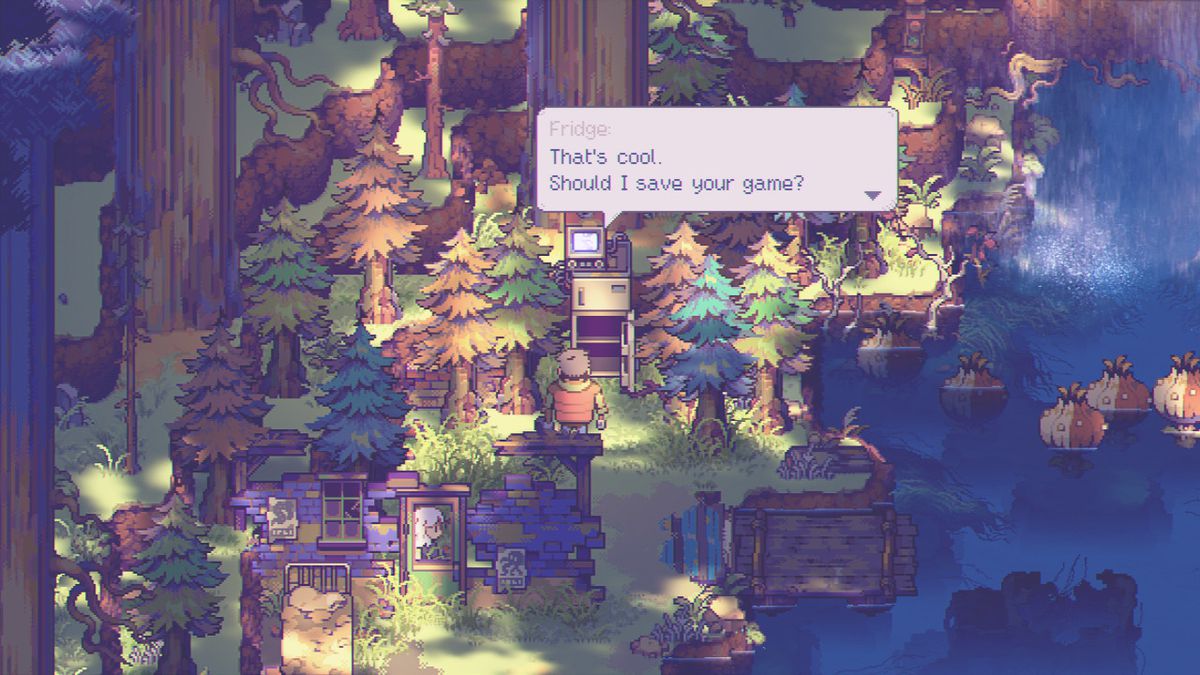
The gameplay of Eastward is to guide John and Sam through different tasks, puzzles, and obstacles as you inadvertently make your way to discover more about the outside world along with the mystery of the destructive miasma. You control both John and Sam together, able to switch between them intuitively to use their different skill sets to aid you through the puzzles and mutated creatures you will encounter.
John takes on the more melee of roles, using his trusty frying pan and bombs to beat away the monsters and obstacles. Sam instead uses her budding mysterious supernatural powers to hold enemies in their tracks and interact with objects from a distance. You unlock more weapons and abilities as you continue through the game like the shotgun, flamethrower and energy bursts. These tools then allow you adventure out further into previously unreachable areas.
“There are NPCs of all diverse shapes, sizes, races, gender identities, even LGBTQI+ relationships.”
The controls to switch between the two and fight are very easy to pick up whether you’re using a mouse and keyboard or a controller. These controls let you rely on muscle memory as you navigate the duo around together or individually as you will have to do to complete some puzzles and clear objectives. The menu screen and map is also simple to navigate and understand. It’s set out in this really cool retro-technology style you will see peppered throughout the game, adding to its overall old sci-fi and steampunk vibe.
You can see where Eastward draws inspiration from RPGs and adventure games like The Legend of Zelda and Mother. A similar heart system for health is present here and there’s even a fun cooking minigame to make healing dishes and provide stat buffs to the duo. Cooking is important both narratively and mechanically so it’s only natural to stick to that theme and use sentient fridges to save your game progress too. Or, as the game refers to it, memories.
Just prepare yourself for an existential crisis or two every time you save your memories in a fridge. This sequence has left me baffled and stuttering at the screen on more than one occasion. (Listen to your therapist folks, the talking fridge isn’t real and can’t hurt you.)
Eastward has a nice balance between enemy encounters and bosses to go though in gameplay. With plenty of loot chests to discover along the way, the sometimes bizarre boss monsters are spaced out nice and evenly so that as you beat each boss and gain another heart, you are not getting too far ahead or behind in health capacity. The health you accumulate is balanced just enough to have you ready and able to fight more monstrous creatures as they get progressively more difficult. Not relying on the common RPG level-up system, the only thing you will want to grind monsters for is item drops and some of that sweet, salty currency.

Eastward isn’t just focused on fighting monsters and solving puzzles, there are also plenty of things to do on the side. Little mini-games, optional side quests, town mysteries, and most of all, talking and interacting with others. Eastward gives you plenty of small clues to let you piece the story together yourself, as long as you take the time to explore the world around you that is. The game rewards those who take their time absorbing the dialogue in each area, rather than blasting through the game as fast as you can.
At times, the amount of talking and dialogue to go through can make the scenes drag on for longer than it really needs to. Of course, there is no escaping that in a narrative-focused game with no voice acting. But in the end, I felt more satisfaction from the game in those little moments. Taking that extra bit of time to listen to an NPC paint an image of their life made the world feel more substantial.
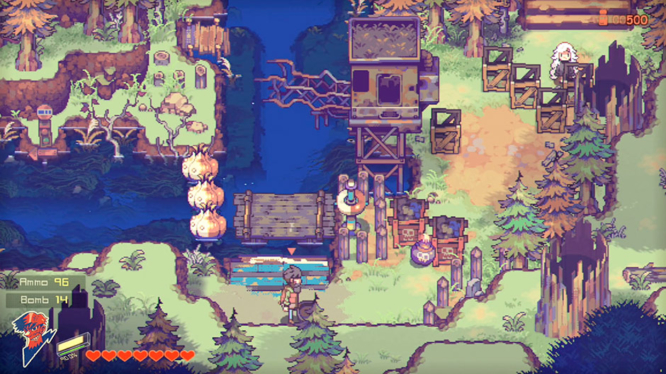
The things that have captivated me the most about Eastward is its beautifully diverse and lovable cast of characters. Everyone you talk to has their own tangible personality expressed both through their character designs and their dialogue. Some can lean to the more stereotyped or caricature side of designs but are not degraded or made out to be the butt of some cruel “joke”. There are NPC’s of all diverse shapes, sizes, races, gender identities, even LGBTQI+ relationships. They’re all just going about living their lives freely in the background. Robots and humans live together in companionship and even marriage without even so much as a sideways glance.
It has heartened me to see this varied representation and attention to little details. These small things unrelated to the plot may go unnoticed by most gamers, but these out of focus moments have made Eastward an immensely more enjoyable playthrough than I was expecting.
Pixpil really has succeeded in making a pixel art game where you will feel real emotions for imaginary people. I have developed such an affection for these charming characters and the story that ties them all together. It’s safe to say that Eastward takes the stage as my favourite game release of 2021 so far.
The game within the game
If you are still craving that particular buzz only a more turn-based RPG can give you, then you are in for a lucky little surprise. It’s called Earth Born, and it is a widespread favourite game in this declining apocalyptic landscape. They even have their own gacha ball machines or “Pixball machines” as they are called, where you can collect items to use in Earth Born!
It’s one of the very first things you are introduced to when starting Eastward. There is an arcade machine in every town and city you go to for you to play at. It is an old-school JRPG experience like Final Fantasy or Earthbound, compressed down into a smaller package. Don’t be fooled by its faster pace though, because you can still end up spending a solid few hours trying to beat the game if you so choose. That’s if you can actually beat it. It’s known to be a tough game to finish in the world of Eastward, and that holds true when you actually play it too.
Earth Born is a simple story of a hero gathering party members to then go and defeat the Demon King in his castle within 7 days, and save the princess within. You lose the game if you are defeated or time runs out, but the party members you find transfer over, so you’re encouraged to play multiple times. Your aim for Earth Born is basically to level up your party like mad before going to fight the Demon King. While playing through the main game of Eastward, you will find tokens you can use to get Pixballs. The figurines inside them grant you associated items for you to use in Earth Born, making it more likely for you to win.
Earth Born seems to be intrinsically tied to Eastward in some way, but it is not necessary to beat the mini-game, or even play it at all, if you don’t want to. The game will continue on down its linear path of friendship and discovery just the same, whether you spend hours playing Earth Born like me, or not.
9
Amazing
Positive:
- Character dialogue that gives you a sense of life and vitality.
- There are optional extra world quests and mini-games to play if you so desire to.
- Detailed sprite animations not often seen in pixel games.
Negative:
- Prepare to spend a lot of time reading.
Eastward is truly a gem of the pixel adventure-RPG genre. It is plain as day that Pixpil poured their affections for this genre into making this game. They’ve provided fluid and expressive animation rarely seen in pixel games, lively characters, quirky writing, and catchy chiptune soundtracks. It is visually enticing from the beginning and will continue to keep you hooked until you are satisfied with unravelling its narrative. Eastward has easily taken its place as my favourite game of this year. I highly encourage lovers of pixel JRPGs to try this game out for yourselves. John and Sam will cook you up a satisfying adventure you will want to devour whole!
